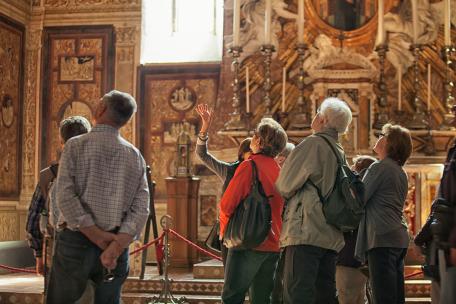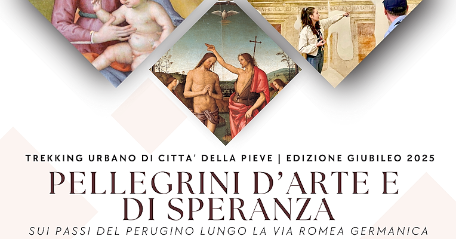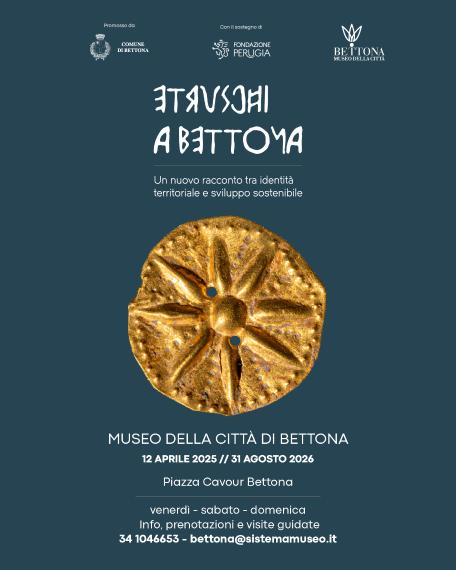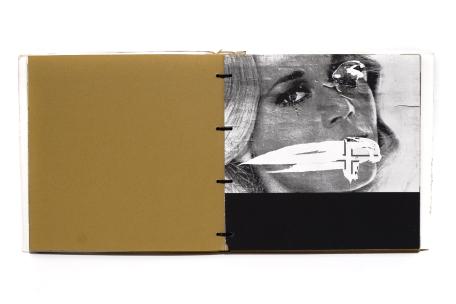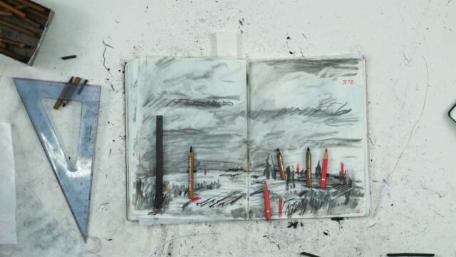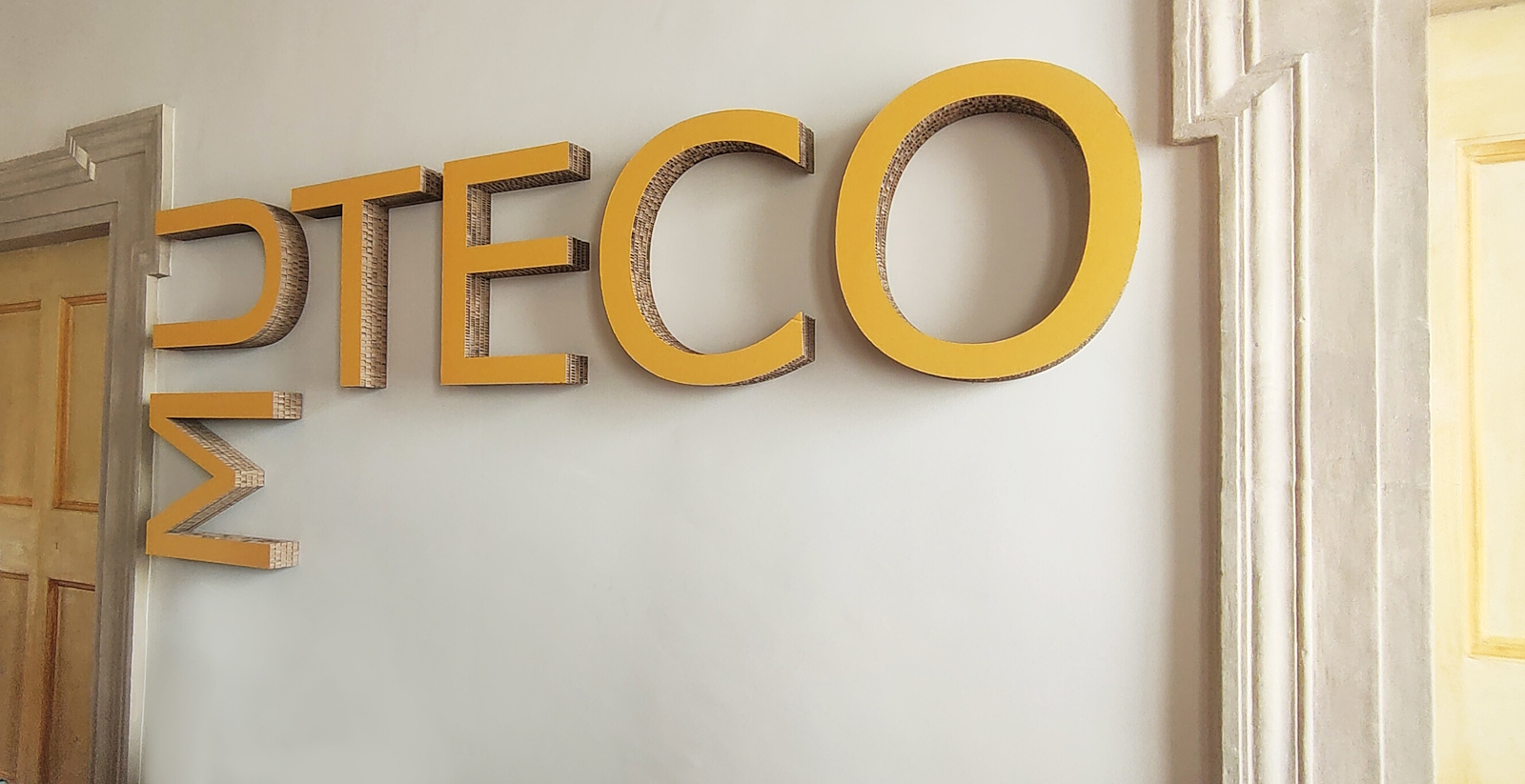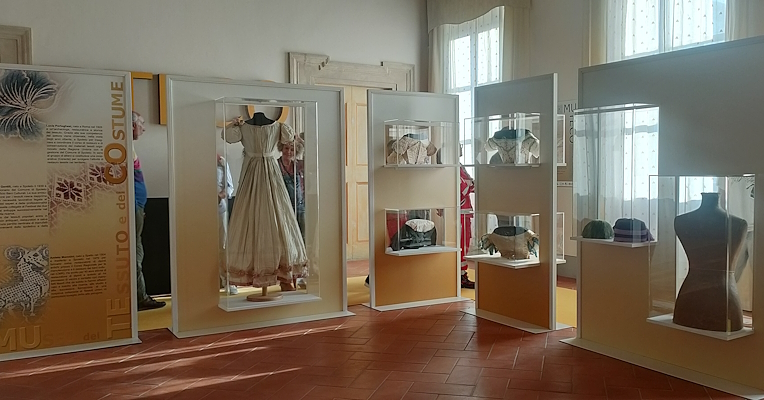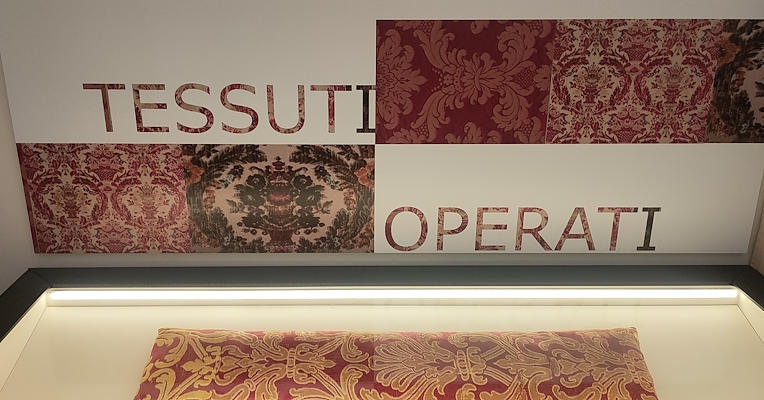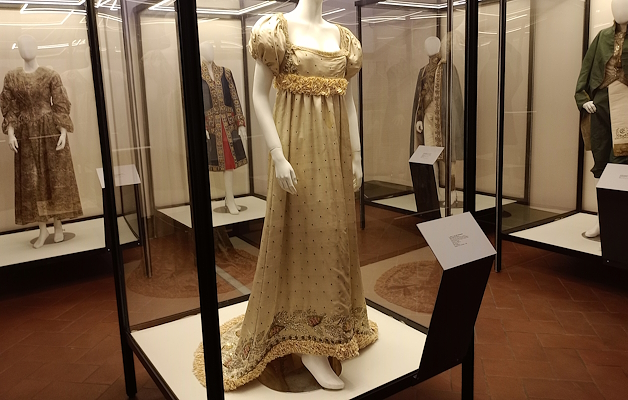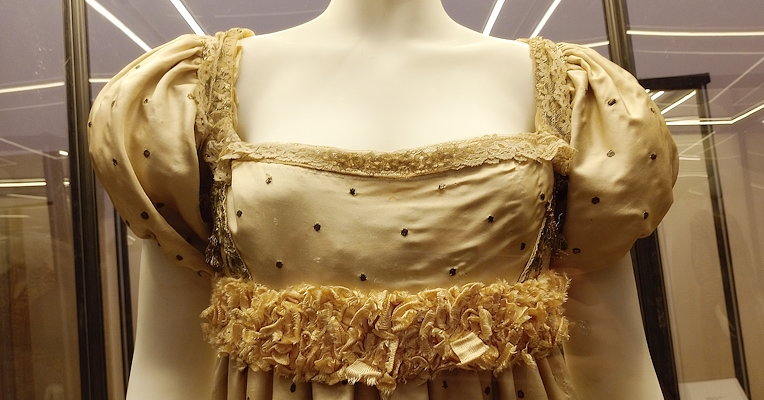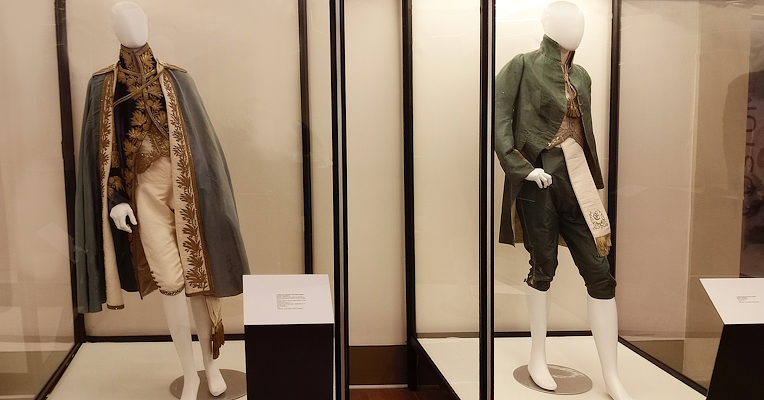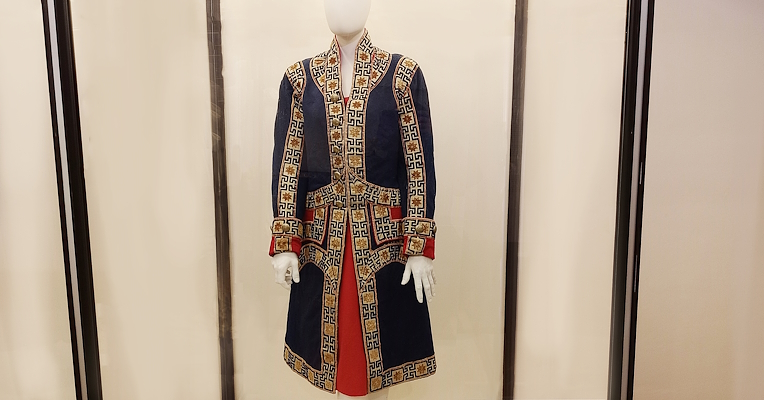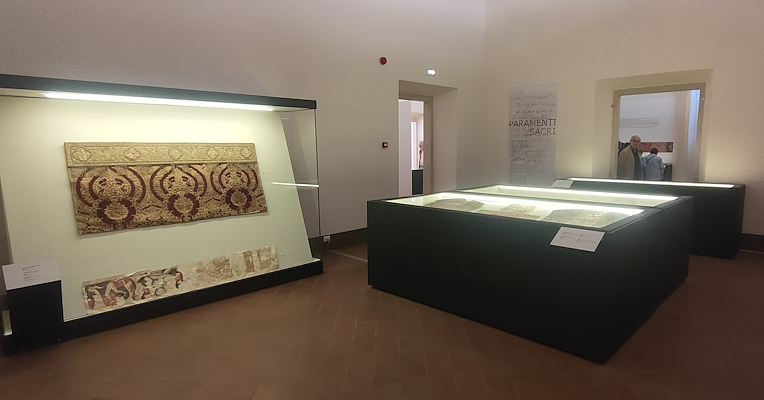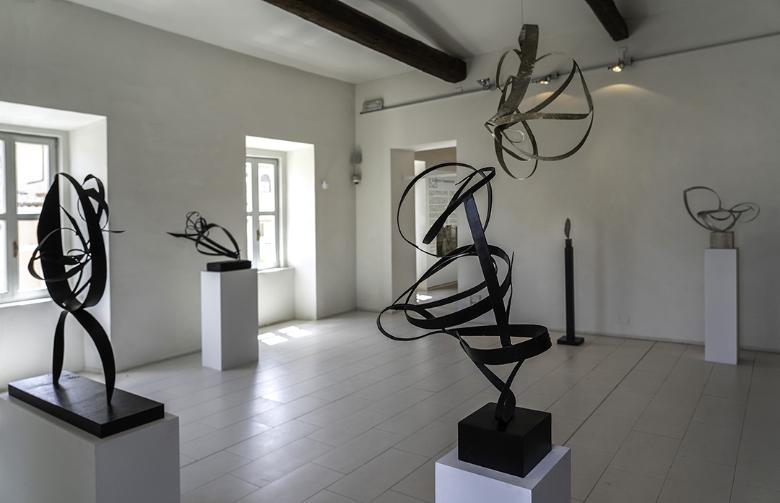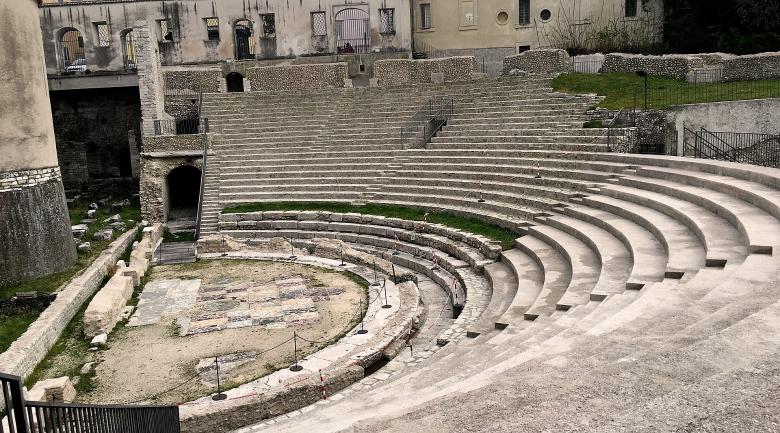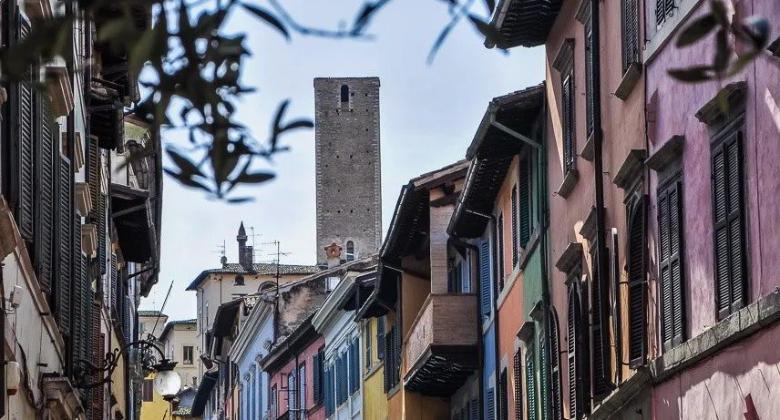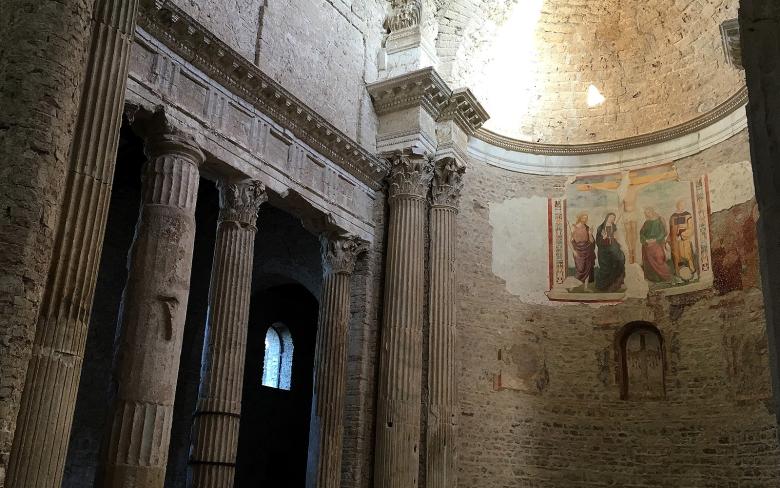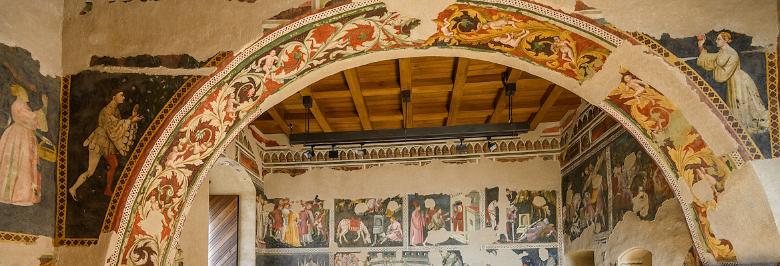From Umbrian Textiles to Precious Figured Fabrics
Among the artefacts displayed in the first room of the exhibition are the precious “alla perugina” textile (Perugian textile), one of Umbria’s most peculiar textile types, featured in works by important artists such as Leonardo da Vinci, Ghirlandaio and Giotto. These textiles, typically made with a white linen base and decorated with indigo cotton bands, display animal, vegetal, architectural and geometric motifs, as well as inscriptions, mermaids and griffins.
Also on display are overshot fabrics called “popular”, created until the mid-19th century, easily recognisable by their geometric and floral block motifs.
The next room is dedicated to figured fabrics, displaying a velvet shawl from Spitalfields (England) or the Collicola cushion, originating from Palazzo Collicola in Spoleto, illustrating the richness and variety of this type of artefact.
Dream Dresses Belonging to Counts and Princesses
The following room, the dress room, displays male and female garments crafted with luxurious materials that highlight the refinement and opulence of early 19th century fashion.
Among the male attire, notable pieces include a ceremonial iridescent blue velvet gown with gold embroidery, and a green silk day dress that once belonged to Count Valerio Zacchei Travaglini (circa 1810), mayor of the Upper Trasimeno area, appointed by Bonaparte to the Legion of Honour.
Female garments stand out for their refined craftsmanship, and include an Empire-style evening gown that once belonged to Princess Alexandrine de Bleschamps Bonaparte, Napoleon’s sister-in-law. Made of silk with silver foil embroidery, chenille and sequins, the gown features a wide neckline, short puffed sleeves and a train.
Characteristic of the second half of the 19th century, both for its style and fabric, is the second women’s day dress, made from indienne fabric, a very light cloth decorated with printed bouquets of flowers.
In addition to the dresses on display, which are certainly the most representative and best preserved, the collection includes garments dating from the 18th to the 20th century, such as items that once belonged to the city’s Priors and include lace headdresses and gold chains, liveries and waistcoats of municipal valets, as well as men’s and women’s clothing. These pieces are the result of various donations that have enriched the museum’s collection over the last thirty years.
Liturgical Vestments
The final room is dedicated to liturgical vestments, dating from the 14th to the 19th century, showcasing the opulence and meticulous care given to clerical attire. This room displays garments worn by sacred ministers during liturgical celebrations, such as chasubles and copes, or an exquisite antependium or altar frontal, made of crimson red and gold silk velvet by Florentine artisans. This piece features a silk, gold, and silver embroidered band crafted by the nuns of the Monastero della Stella (Monastery of the Star) in Spoleto at the beginning of the 16th century, as evidenced by the inscription below the embroidery.
The exhibition represents only a portion of the sacred vestments in the collection, which are currently stored in municipal storerooms. For instance, the Portoghesi collection alone includes over 300 artefacts: 18 copes, 188 chasubles, 12 liturgical sets worn by the three ministers in solemn form, 19 tunicles, 15 altar frontals and 60 accessories.










